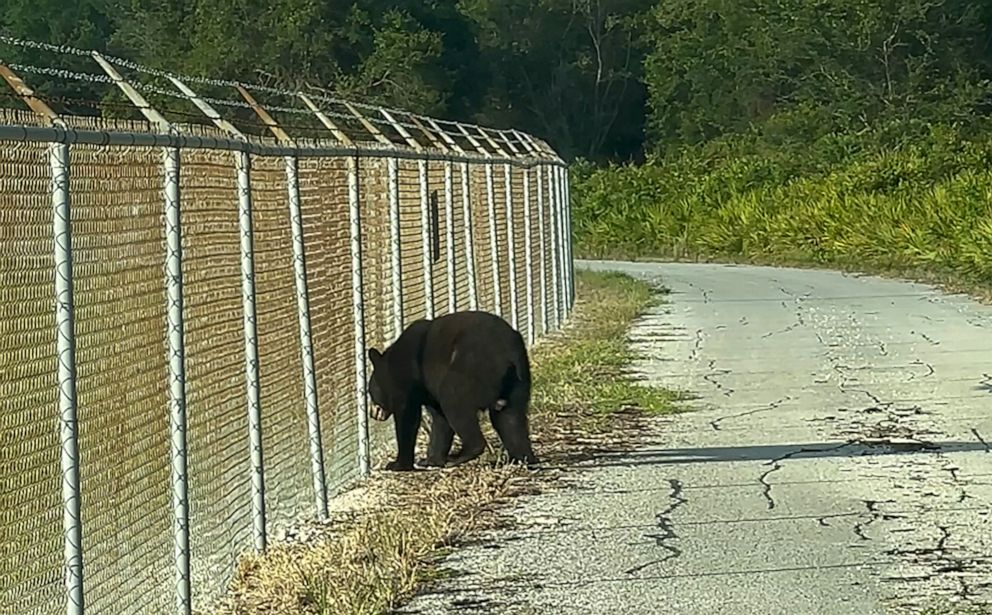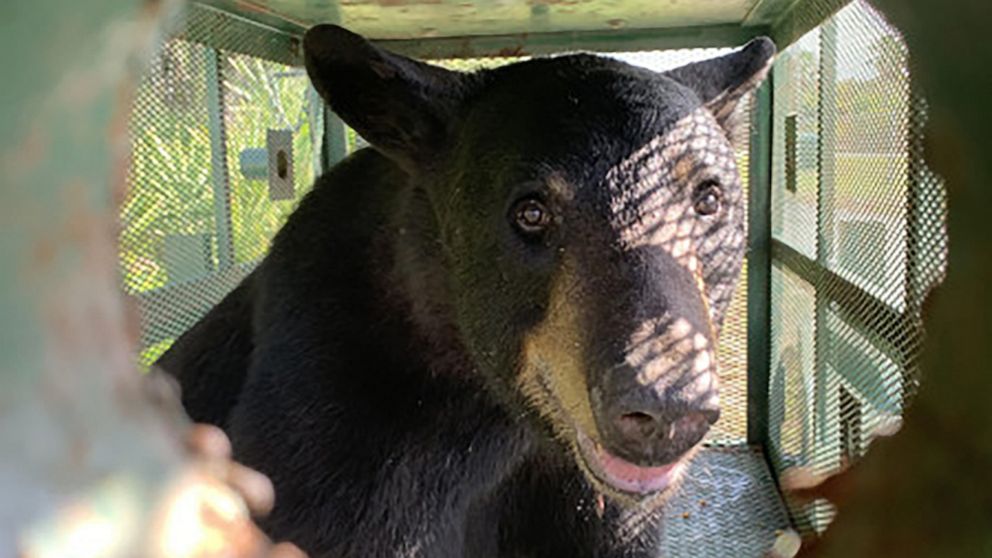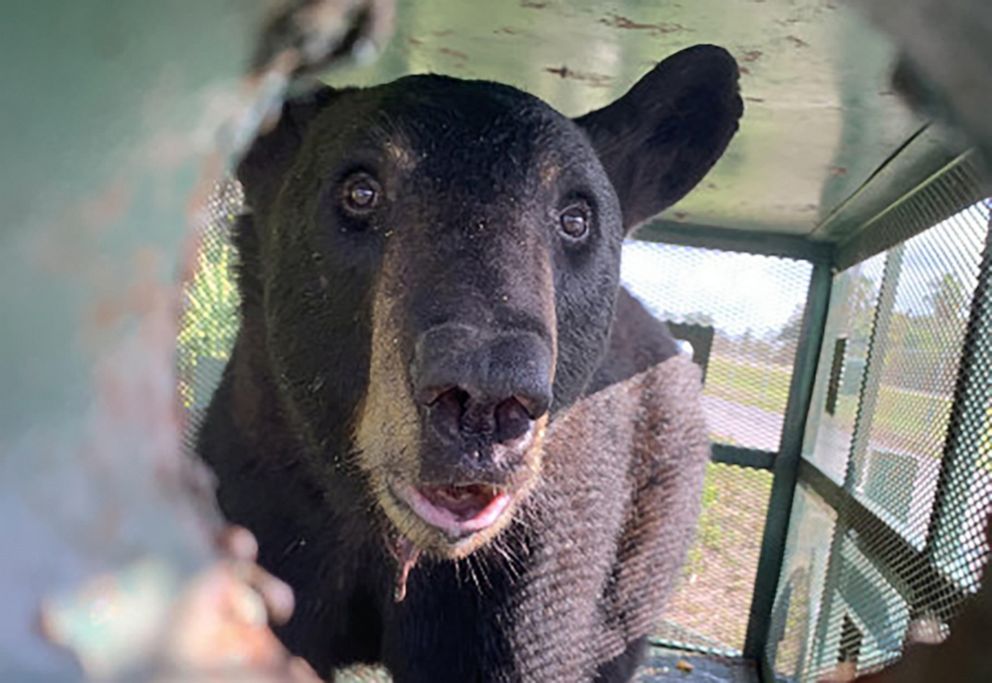Bear captured after wandering onto Tampa International Airport property

Tampa International Airport officials are accustomed to encountering wildlife on the airport’s property. However, this week they encountered a first.
A Florida black bear was spotted Tuesday afternoon by a Transportation Security Administration employee walking along the airport’s perimeter fence, the airport said.
The bear was seen on the north end of the airport property in the employee parking lot, Tampa International Airport Executive Vice President of Operations John Tiliacos said. Airport officials believe the bear made its way onto airport property after scaling a fence.
A black bear was captured on Tampa International Airport property.
Tampa International Airport
Local and state agencies set up a “robust perimeter” and a trap around the area in an attempt to capture the bear, according to Tiliacos. They also used infrared helicopter cameras to monitor the bear overnight, and Tampa police confirmed the bear slept inside the perimeter, the airport said.
After two unsuccessful attempts to tranquilize the bear, on Wednesday morning, it was “eventually lured into one of the traps and was safely captured unharmed,” Tiliacos told reporters during a press briefing.

A black bear was captured on Tampa International Airport property.
Tampa International Airport
Per state protocols, the Florida Fish and Wildlife Conservation Commission relocated the bear to Ocala National Forest in central Florida on Wednesday.
There were no disruptions to airport operations or any risks to airport employees, Tiliacos said.
“All’s well that ends well,” Tiliacos said.
The incident marks the first time in the airport’s more than 50-year history that a bear came onto its property, according to Tiliacos.
“Wildlife is not something that’s foreign to us,” said Tiliacos, who noted that the airport has a wildlife biologist on staff and is accustomed to animals including birds, coyotes and gopher tortoises.

A black bear was captured on Tampa International Airport property.
Tampa International Airport
Florida Fish and Wildlife Conservation Commission staff have been monitoring bear sightings in Tampa for the past several weeks, and the juvenile bear captured on Wednesday is believed to be the same one that was reported in the Carrollwood area of Tampa in May, the agency said.
“During this time of year, bears are more active, with spring marking a return to activity for bears after limited movements in winter,” the Florida Fish and Wildlife Conservation Commission said in a statement.
As juvenile bears — those ages 1 1/2 to 2 1/2 — also start to leave their mothers’ home ranges in the spring and summer, they “may be seen in unexpected areas as they travel in search of a new location to settle down,” the wildlife agency said.
“Typically, these bears will move along on their own,” the agency said. “If you see a bear, give it space, don’t try to approach it, and never feed it.”
Source: abc news















